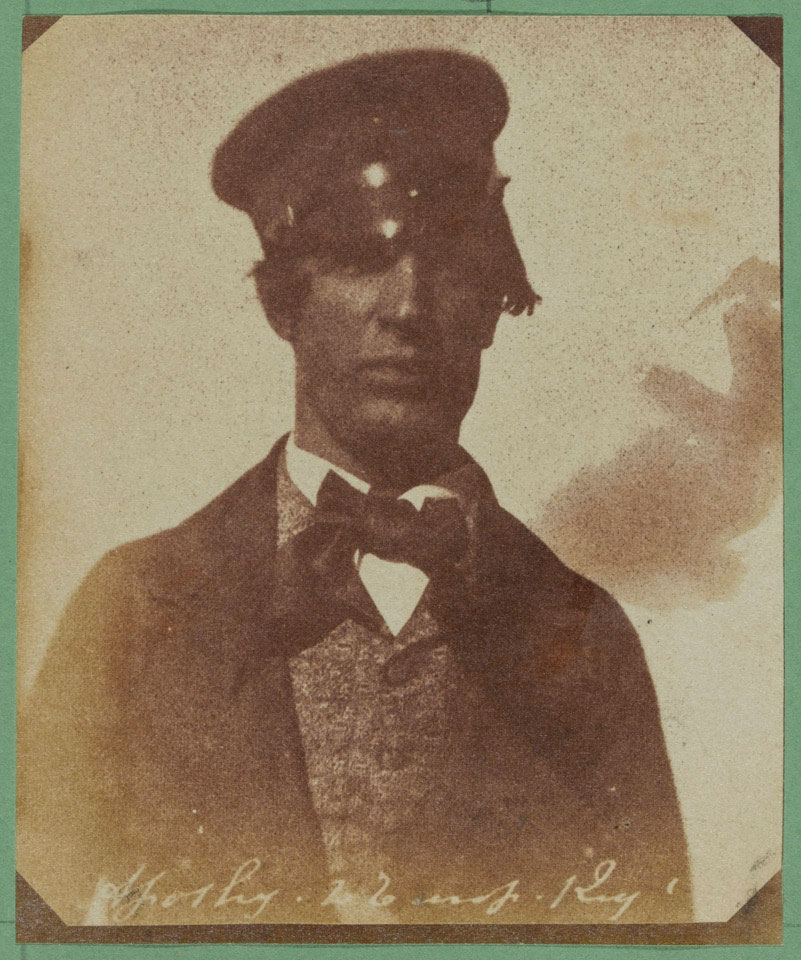
Online Collection
« Prev - 1 of 1 results - Next »
Apothecary of the 2nd Bombay European Regiment, 1849 (c)
Photograph by John McCosh (1805-1885), India, 1849 (c).
McCosh, who joined the Bengal Army as an assistant surgeon in 1831, was one of the first war photographers. He employed the calotype process, the first practicable negative and positive process on paper, patented by William Henry Fox Talbot in 1841. McCosh saw active service on the North East Frontier of India (1832-1833), in Gwalior (1843-1844), the 2nd Sikh War (1848-1849) and the 2nd Burma War (1852-1853).
This unknown apothecary was one of 100 volunteers from the 2nd Bombay Europeans who volunteered for service in the 2nd Sikh War on attachment to other units.
Apothercary was the title given to the various grades of warrant officer in the Indian Military Subordinate Medical Services during the 19th century. They were mainly recruited locally in India and undertook general medical duties.
From an album of 310 photographs, 1848-1853.
NAM Accession Number
NAM. 1962-04-3-224
Copyright/Ownership
National Army Museum, Out of Copyright
Location
National Army Museum, Study collection
Object URL
https://collection.nam.ac.uk/detail.php?acc=1962-04-3-224

